On-page SEO includes all activities that help optimize a single web page. The goal is to improve its visibility and keyword ranking on search engine results pages.
The primary purpose of on-page SEO is to make a web page:
- Relevant to users
- Appealing to search engine bots
Effective on-page SEO increases the page’s chances of:
- Ranking higher
- Getting more organic traffic
- Driving more conversions
This image from GeeksforGeeks explains on-page SEO incredibly well:
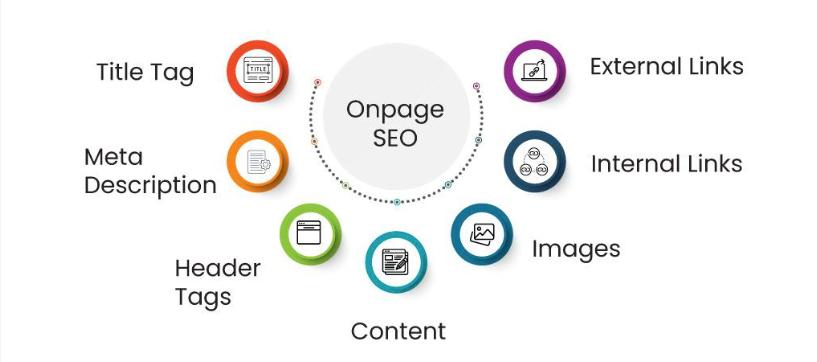
This Article Covers:
- Why is On-Page SEO Important?
- What is the Difference Between On-Page SEO and Off-Page SEO?
- Key Elements of On-Page SEO
- Advanced On-Page SEO Techniques
- On-Page SEO Checklist
- Frequently Asked Questions
Why is On-Page SEO Important?
On-page SEO is essential. It impacts your website’s visibility on search engines and the user experience on your site.
Optimizing on-page elements helps a website rank higher for competitive keywords that bring in the most traffic. These elements include:
- Meta titles
- Content
- Headings
- Images
Most search engines use this to understand a site’s relevance and quality. This helps them more effectively match your website to user searches.
On-page SEO also enhances the user experience. Well-structured, clear content makes it easy for users to find information quickly. Using headings, bullet points, and formatting improves readability.
Optimizing images and multimedia also boosts page loading speed. Faster load times reduce bounce rates. A positive user experience can lead to:
- Longer visits
- Social sharing
- Repeat engagement
What is the Difference Between On-Page SEO and Off-Page SEO?
On-page SEO and off-page SEO are two different SEO strategies. Both aim to improve a website’s visibility and ranking on search engine results pages. However, they focus on different aspects and use unique techniques.
On-page SEO involves optimizations made directly on the website. These changes improve user experience and search engine rankings. The website owner, marketing team, or other administrators fully control these elements.
Off-page SEO includes efforts outside the website. Its goal is to improve a website’s credibility, authority, and reputation. Typically, off-page SEO involves interacting with other websites and online platforms.
On-page SEO includes optimizing:
- Website content
- Meta tags
- Images
- URL structure
- Internal linking
Off-page SEO includes efforts such as:
- Link acquisition
- Social media engagement
- Brand mentions
On-page SEO focuses on improving your website’s content, structure, and elements. Off-page SEO builds your website’s authority through external sources. Sources like backlinks and social media.
Both on-page and off-page SEO are essential for a complete SEO strategy.
Key Elements of On-Page SEO
This next section will inform you about some crucial on-page SEO factors you must consider when working on websites.
Title Tags
Title tags are one of the most important on-page SEO elements. They quickly summarize your page’s content to search engines and users. Optimizing title tags helps improve search rankings and click-through rates (CTR).
Short title tags are essential. Search engines display only a limited number of characters, so concise titles ensure users see the most critical information. A well-written title tag is also easy for users and search engines to read and interpret.
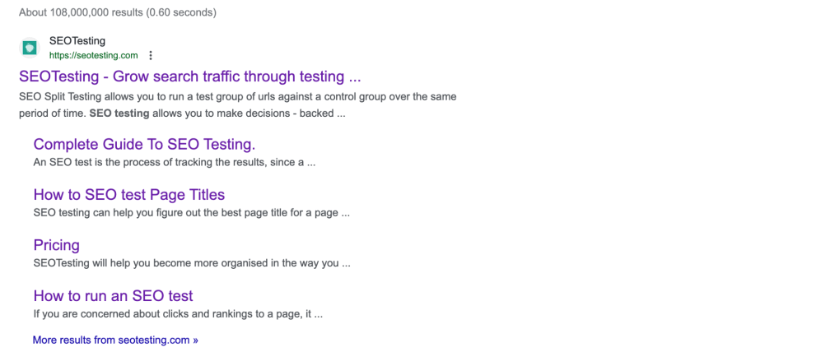
Adding your main keyword to the title tag increases relevancy. Users who see their search terms in the title are likelier to click. This alignment between user intent and your content can lead to higher CTRs and better rankings over time.
Modifiers like “Best,” “Tips,” “Guide,” or “How To” can make your title more specific and appealing. They help you target long-tail keywords and improve visibility for niche search queries. For example, changing a title from “Digital Cameras” to “Best Digital Cameras for Beginners” can attract a more specific audience.
Title tag testing is a powerful way to optimize performance. Use tools like SEOTesting to experiment with different variations. Test for impact on rankings, clicks, and impressions. Regular testing helps identify high-performing title tags, keeping your SEO strategy adaptable. For instance, a minor change to a customer’s title tag led to a 92% increase in clicks and an 18% boost in impressions.
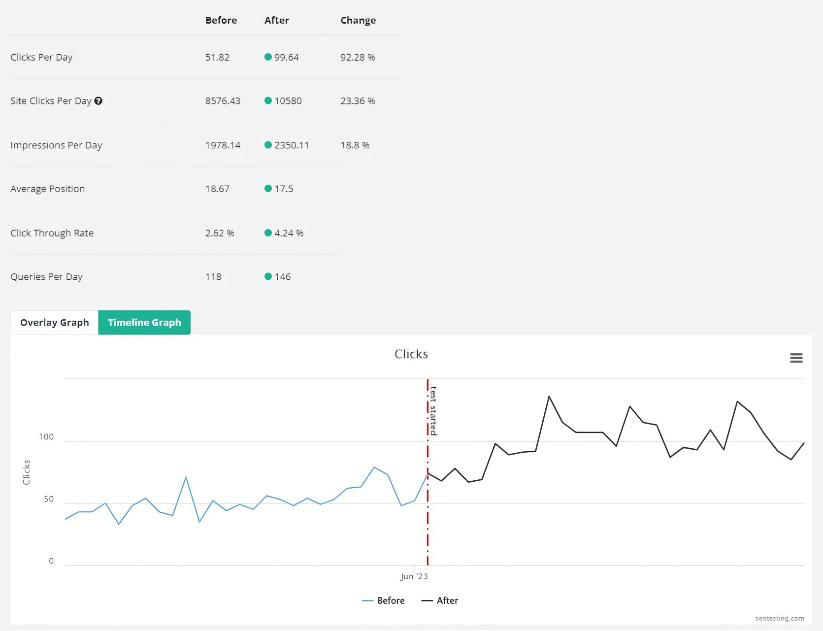
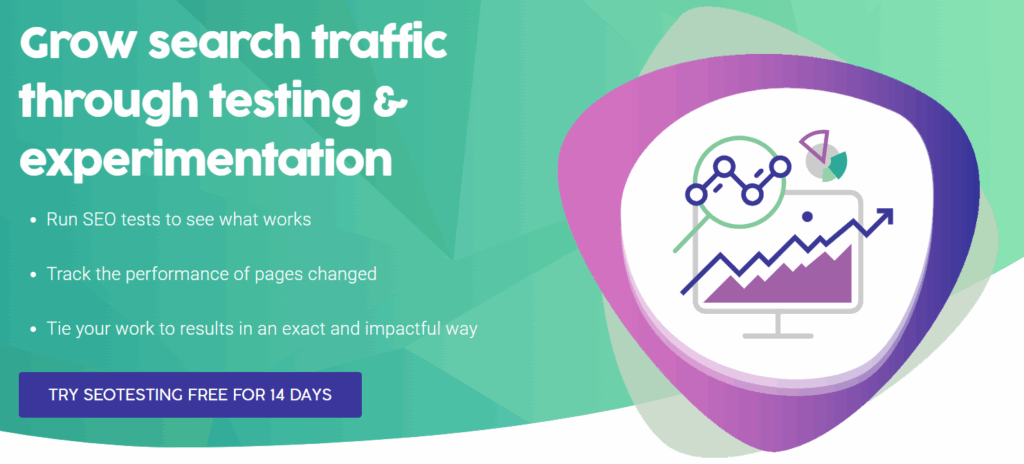
Meta Descriptions
Meta descriptions summarize your page’s content and play a key role in on-page SEO. While not a direct ranking factor, they influence CTR and user engagement.
Using your main keyword in the meta description improves relevancy and helps search engines match your page with user queries. A precise alignment between the search term and your description increases clicks. Users see that your content matches what they seek, boosting engagement and sending positive signals to search engines.
Just like in title tags, modifiers can make meta descriptions more appealing. Words like “Top,” “Complete,” or “Review” catch attention and expand the range of search queries your page can rank for.
A compelling meta description highlights how your content solves user needs. It should be concise and engaging, offering enough information to entice users without overwhelming them.
Headings
Headings (H1, H2, etc.) organize your content and make it easier for users and search engines to understand. They provide structure and highlight key topics.
Every page should have an H1 that reflects its main topic. Subheadings (H2, H3) can break content into sections. Descriptive headings help search engines, and users quickly grasp the focus of your page.
Including keywords in headings signals the relevance of your content. For example, using “Best Digital Cameras for Beginners” as an H1 reinforces the focus of your page while targeting user queries.
Well-structured headings improve readability and keep users engaged. They make it easier to skim the content and find information quickly. This positive user experience can indirectly boost rankings.
Headings work alongside title tags and meta descriptions to create a cohesive and optimized on-page SEO strategy. You can improve visibility, usability, and overall site performance by aligning these elements.
URL Optimization
Optimizing your URLs is essential for on-page SEO. Including relevant keywords in your URLs helps search engines understand your page’s topic, increasing the chances of your content appearing in searches.
User-friendly URLs also help visitors by giving them a clear idea of your page’s content before they click. This can:
- Reduce bounce rates
- Encourage users to explore your site further

Author’s Note: We have a great guide on how to optimize URLs.
Readable URLs are easy to share on social media or other websites. This makes them simple for both users and search engines to understand. Well-structured URLs can lead to:
- More clicks
- More shares
- More backlinks
Clear URLs also help avoid duplicate content issues. They let search engines crawl and index your pages efficiently, ensuring your content appears accurately in search results.
You can improve your site’s visibility by making URLs clear, relevant, and easy to read. This simple practice provides a better user experience and supports strong on-page SEO!
Content Quality
Creating high-quality, helpful content can improve your on-site SEO. It gives value to your audience and aligns with Google’s ranking systems. Including updates like the “Helpful Content Updates” introduced in 2021.
Content that answers your audience’s questions makes your website a trusted source. When users stay on your site longer, your bounce rate lowers. This signals to search engines that your content is relevant and engaging. Google’s recent updates reward sites that provide valuable information.
High-quality content also attracts more backlinks than less helpful content. Backlinks are essential for building authority with search engines. When other trusted sites link to your content, it tells search engines that your site is reliable. This can also improve your rankings.
Google’s algorithms now assess content quality more effectively. They consider readability, depth, and user engagement. You increase your chance of ranking well by focusing on these factors.
Creating quality content regularly also attracts organic traffic and encourages sharing. This grows your reach and authority.
Keyword Placement
Keyword placement is a key part of on-page SEO. Strategically placing keywords helps search engines understand the topic of your content and improves its visibility.
Adding your main keyword in prominent locations like the title, headings, and the first 100 words of your content signals its importance. Use keywords naturally to avoid keyword stuffing, harming user experience and rankings. Spread variations of your target keyword throughout the text to cover different search intents. This helps attract a broader audience without overusing a single term.
Internal linking also offers an opportunity for keyword placement. Use descriptive anchor text with relevant keywords to help search engines and users navigate your site more effectively.
Internal Linking
Internal links are vital for on-page SEO. They act as signposts, guiding visitors and search engine bots through your site. These links connect one page to another within your website.
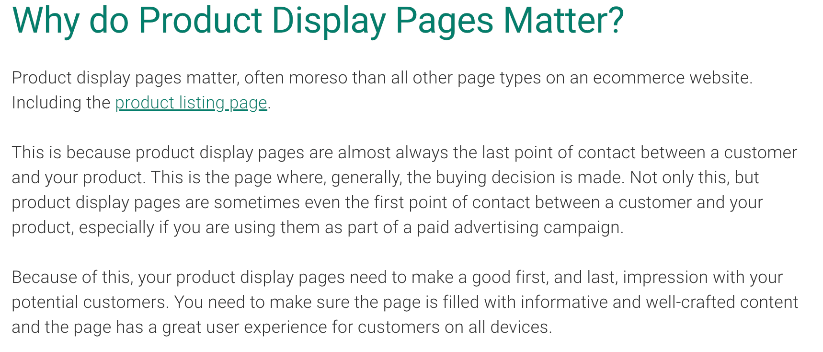
You help search engine crawlers understand your site’s structure and the relationships between your pages using internal links. Linking from one page to another signals to search engines that the linked page is relevant and valuable, which can improve its visibility in search results.
Internal links also keep visitors engaged by offering them related content. This increases the time users spend on your site, boosting engagement metrics. When adding internal links, always use descriptive anchor text. Clear anchor text indicates what the linked page is about, making navigation easier for users and search engines.
External Linking
External links, or outbound links, connect your website to other sites. They are essential in on-page SEO because they add credibility and context to your content.
When you link to reputable and relevant external sources, you show search engines and users that your content is well-supported and trustworthy. This enhances your content’s authority. It also indicates that you have researched and added value for your readers.
External links help search engines understand the broader web and how your content fits it. However, it’s important to link only to high-quality, relevant sources. Too many external links or links to irrelevant sites can harm your SEO efforts. Use them strategically to enhance user experience and build trust with your audience.
Alt Text for Images
Alt text improves accessibility and boosts on-page SEO. It describes the content of an image for search engines and visually impaired users. Adding descriptive, keyword-rich alt text makes your content more searchable and accessible.
Alt text should explain the purpose of the image and include relevant keywords where appropriate. For example, instead of “image1.jpg,” use “SEO-testing-dashboard-example.” Avoid keyword stuffing in alt text, as this can reduce its value.
Adding alt text to every image on your site improves your chances of ranking in image search results. This can bring additional traffic to your pages.
Page Load Speed
Page load speed plays a critical role in on-page SEO. A fast-loading site improves user experience and search engine rankings. Several factors influence page speed, and optimizing them ensures your website performs at its best.
First, choosing the right hosting solution is essential. A quality host with servers near your audience reduces latency. Adding a Content Delivery Network (CDN) spreads your content across multiple servers, making it load faster for users in different locations.
Reducing the number of redirects on your site also improves speed. Redirects create extra server requests, which increase loading times. Minimize them to streamline the loading process.
Browser caching further enhances speed. By storing elements like images and scripts on a user’s device, caching eliminates the need to reload these files during future visits. Set longer cache durations for static content to maximize performance.
Deferring the loading of CSS and JavaScript files speeds up the rendering of critical content. In script tags, use attributes like “async” or “defer” to prioritize essential elements. This reduces render-blocking and ensures users see your content faster.
Finally, minify HTML, CSS, and JavaScript to reduce file sizes. Removing unnecessary spaces, comments, and formatting speeds up browser transmission and processing. This optimization reduces latency and improves overall loading time.
Focusing on these elements can significantly boost page load speed and deliver a better user experience.
Image Optimization
Image optimization is crucial for improving page load speed and enhancing SEO. Large images slow down your site, frustrating users and hurting rankings. Optimizing images ensures they look great and load quickly.
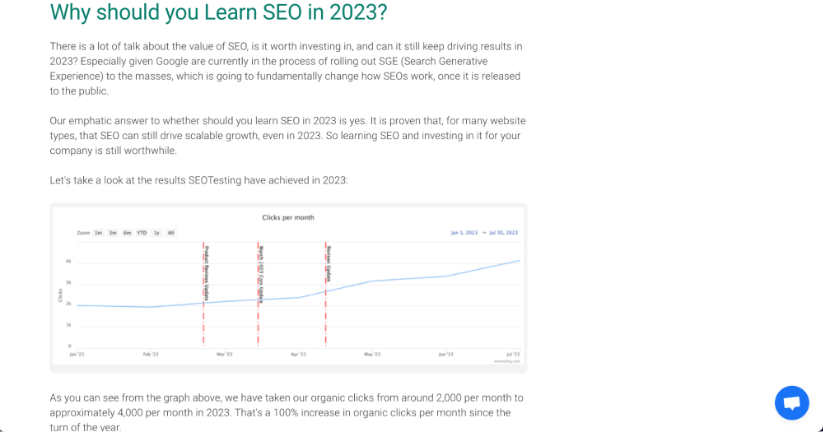
Start by compressing images to reduce file size without losing quality. Tools like TinyPNG or ImageOptim make this process simple. Choose the correct format—use JPEG for photos and PNG for transparent images.
Resize images to fit their display dimensions to avoid wasting bandwidth. Responsive design principles, such as flexible images and CSS media queries, ensure your visuals adapt seamlessly across devices.
Optimized images enhance user experience, boost performance, and contribute to better rankings.
User Experience
User experience (UX) is a significant factor in on-page SEO. Search engines prioritize sites that provide a seamless, enjoyable experience for visitors.
Intuitive navigation helps users find what they need quickly. Organize your content with clear menus and internal links. Fast page load times also keep users engaged. Slow-loading pages increase bounce rates and can harm your rankings.
A mobile-friendly design ensures your site works well on any device. Responsive layouts, readable fonts, and adequately spaced buttons improve usability on smaller screens. High-quality, engaging content keeps users on your site longer and encourages them to explore further.
A positive UX boosts user satisfaction and signals to search engines that your site provides value.
Content Freshness
Fresh content is essential for staying relevant in search results. Search engines favor updated pages, especially for topics that change frequently.
Regularly reviewing and updating your content ensures it stays accurate and valuable. Add new insights, refresh outdated information, and optimize for current search trends. This practice shows users and search engines that your site is active and reliable.
Fresh content also gives you opportunities to target trending keywords. For example, updating a blog post with recent data can help it rank higher for related queries.
Keeping your content fresh enhances its relevance and increases your chances of maintaining strong rankings over time.
Advanced On-Page SEO Techniques
In this section, we will discuss some of the more advanced on-page SEO techniques that you can use to your advantage.
Schema Markup
Schema markup is structured data that helps search engines understand your content better. Adding schema provides detailed information about your content’s purpose and context.
Schema can enhance your search results with rich snippets like star ratings, product prices, or FAQs. These visual elements make your results stand out and attract more clicks. For example, adding FAQ schema to a page ensures your answers appear directly in search results.
Using schema improves how search engines interpret your site. It also aligns with voice search queries and mobile-first indexing. Adding it to relevant pages can boost visibility and drive more traffic.
Core Web Vitals
Core Web Vitals are a set of metrics introduced by Google to measure the user experience of a webpage. These metrics focus on three key aspects of performance:
- Loading Speed
- Interactivity
- Visual Stability
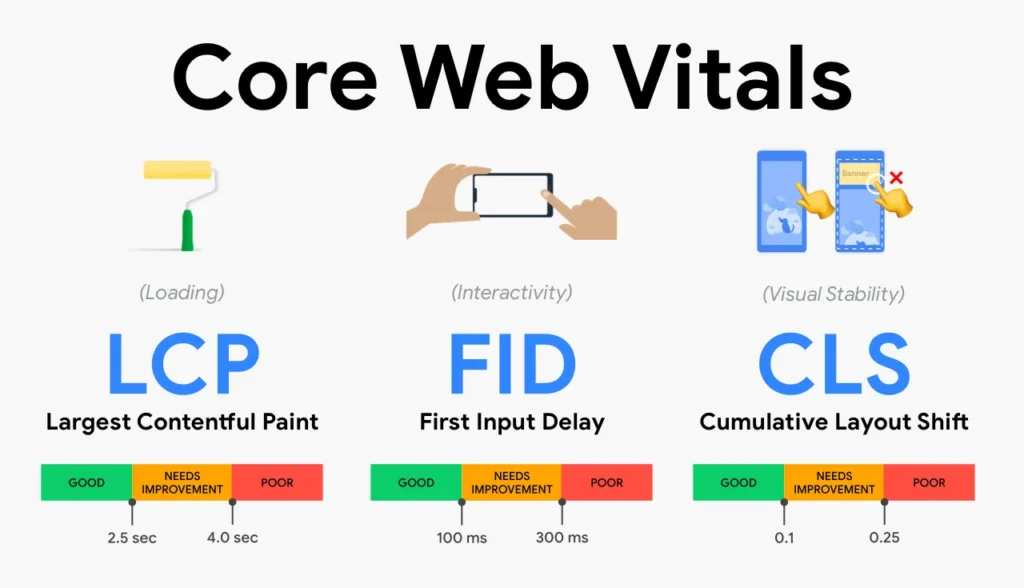
Optimizing these elements not only improves your page’s rankings but also enhances user satisfaction.
The first metric, Largest Contentful Paint (LCP), measures the time it takes for the largest visible element on the page—such as an image or heading—to load. A good LCP score is 2.5 seconds or less.
Next is First Input Delay (FID), which assesses the responsiveness of a webpage by tracking the time it takes for the page to respond to the first user interaction, such as clicking a link or tapping a button. A score of 100 milliseconds or less is ideal for FID.
Finally, Cumulative Layout Shift (CLS) evaluates the visual stability of the page by measuring how often elements shift unexpectedly during loading, with an acceptable score being 0.1 or less.
Core Web Vitals matter because they are now part of Google’s ranking factors under the Page Experience Update. Pages that perform well on these metrics not only rank better but also offer a more satisfying experience to users, leading to lower bounce rates and higher engagement.
To optimize these metrics, you can improve LCP by using faster hosting, optimizing and compressing images, and minimizing render-blocking resources like JavaScript and CSS. For FID, focus on reducing JavaScript execution time, leveraging browser caching, and deferring non-critical scripts. To enhance CLS, ensure that all media files, such as images and videos, have defined width and height attributes, avoid inserting content above the fold that pushes existing elements down, and use proper font-display strategies for web fonts.
Measuring and tracking these metrics can be done using tools like Google PageSpeed Insights, Lighthouse in Chrome DevTools, and the Core Web Vitals report in Google Search Console.
By regularly assessing and improving your Core Web Vitals, you ensure not only better SEO performance but also a more seamless user experience.
Mobile Friendliness & Optimization
Mobile-friendliness is a key factor in SEO and user experience. With Google prioritizing mobile-first indexing, having a responsive website is more important than ever. Ensuring your site adapts seamlessly to all devices improves rankings and engages visitors.
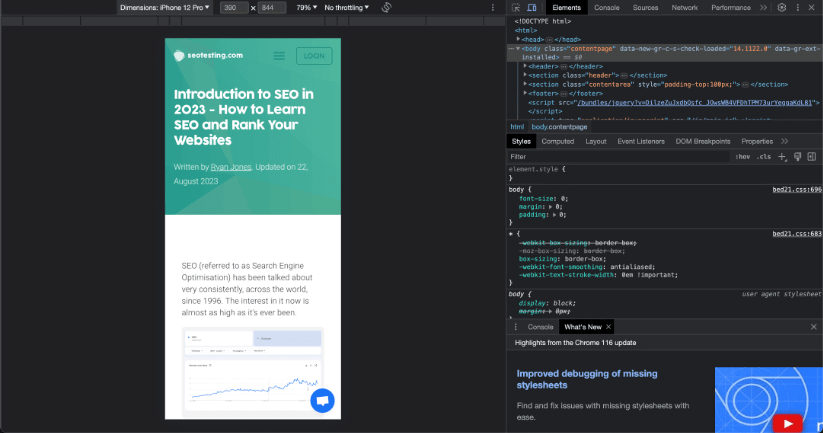
Readability is a crucial aspect of mobile-friendliness. Mobile screens are smaller, so your content should be easily read without zooming. Use simple fonts, appropriate text sizes, and ample line spacing to create a comfortable reading experience. Organize your content into short paragraphs and use bullet points to simplify scanning. Clear, concise text ensures users can quickly find the information they need.
Image formatting plays a significant role in making your site mobile-friendly. Resize and optimize images to fit different screen sizes. This reduces loading times and prevents oversized images from disrupting layouts. Use responsive design principles, like flexible images and CSS media queries, to ensure visuals adapt well across devices.
Navigation is another critical element. Buttons and links should be large enough to tap comfortably and spaced out to prevent accidental clicks. Touch-sensitive styles, such as enlarging buttons when tapped, enhance interactivity. Media queries also allow you to tailor button sizes and styles for various screen dimensions.
Responsive design ties everything together. Features like fluid grids and flexible layouts ensure your site adjusts to any screen size. Test your website on multiple devices using tools like Google Chrome’s Developer Tools. This helps identify and fix any mobile usability issues.
Focusing on mobile-friendliness improves your site’s accessibility, performance, and search rankings. It also creates a smoother experience for users, no matter how they access your content.
User Engagement Metrics
User engagement metrics are indirect signals that search engines use to determine the quality and relevance of a webpage. These metrics provide insights into how users interact with your content and whether it satisfies their expectations.
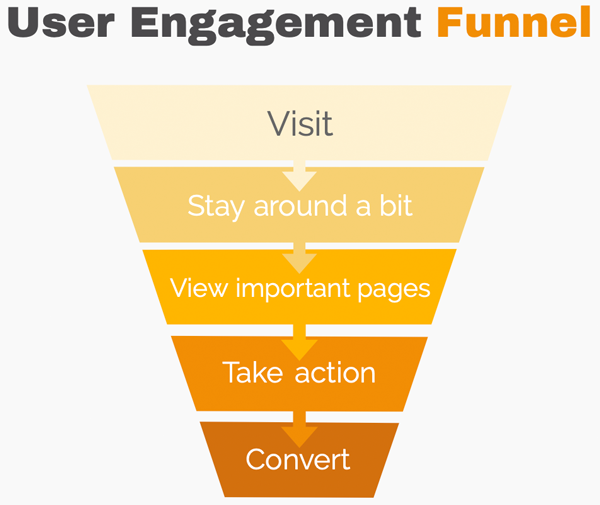
One important metric is bounce rate, which measures the percentage of visitors who leave your site after viewing only one page. A high bounce rate often suggests that the content did not meet user intent or that the page had usability issues.
Another key metric is dwell time, which tracks how long a user stays on your page before returning to the search results. Longer dwell times indicate that your content is engaging and relevant.
Pages per session, the number of pages a user visits during a single session, reflects the quality of internal linking and site navigation.
Lastly, click-through rate (CTR) measures how many users click on your link in search results, signaling to search engines whether your page appears relevant to search queries.
Improving user engagement metrics requires aligning your content with user intent and making it more accessible and engaging.
To reduce bounce rate, ensure that your content directly addresses the user’s query, improve readability by breaking up text with shorter paragraphs and subheadings, and optimize your page speed to minimize frustration.
To increase dwell time, focus on providing comprehensive, high-quality content that covers all aspects of the user’s query and incorporate multimedia such as videos or interactive tools to keep users engaged.
For higher pages per session, include internal links strategically throughout your content and offer suggestions for related articles or resources at the end of the page.
Improving CTR involves writing compelling meta descriptions and titles, using structured data like rich snippets to stand out in search results, and testing different combinations of titles and descriptions to find the most effective ones.
Tracking these metrics is essential to understand how users are interacting with your content and identify areas for improvement. Tools like Google Analytics can provide data on bounce rates, session durations, and pages per session, while Google Search Console offers insights into CTR for specific keywords and queries. Heatmap tools like Hotjar or Crazy Egg can visually demonstrate how users navigate your pages, helping you optimize for better engagement. High user engagement not only sends positive signals to search engines but also leads to greater user satisfaction, higher conversion rates, and more returning visitors, making it a critical component of your on-page SEO strategy.
E-E-A-T
E-E-A-T stands for Experience, Expertise, Authoritativeness, and Trustworthiness. It is a crucial framework used by Google to evaluate the quality of content and the credibility of websites. Demonstrating strong E-E-A-T signals improves your site’s chances of ranking higher in search results.
Experience focuses on showcasing first-hand or in-depth knowledge about a topic. Adding personal insights, case studies, or examples can highlight your practical understanding of the subject.
Expertise emphasizes your qualifications or skill level in the area you’re writing about. This can include citing credentials, linking to other professional content you’ve created, or collaborating with subject matter experts.
Authoritativeness shows that you are a trusted source in your niche. Building backlinks from reputable sites, gathering positive reviews, and sharing endorsements can strengthen your authority. Publishing detailed, well-researched content also contributes to this.
Trustworthiness ensures your content and site are reliable. Clear policies, secure website protocols (HTTPS), and accurate information build trust with users and search engines alike.
To optimize for E-E-A-T, create high-quality, accurate content that reflects your expertise. Show your credentials, cite reputable sources, and make it easy for users to verify your information. By prioritizing E-E-A-T, you signal to search engines that your site is reliable and deserving of a higher ranking.
On-Page SEO Checklist
To help you optimize your website’s pages, we have created an on-page SEO checklist that you can download:
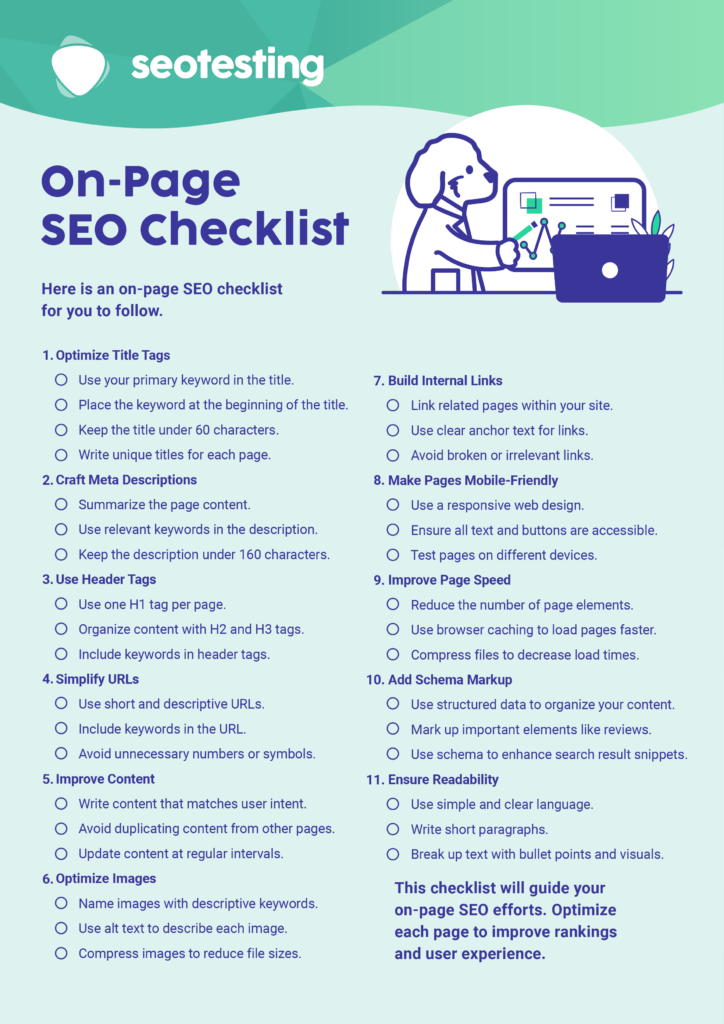
Frequently Asked Questions
To finish this article off, we have answered some of the web’s most searched questions surrounding on-page SEO.
How do you check on-page SEO?
Conduct a comprehensive audit of your web pages to assess on-page SEO. This involves evaluating elements like meta titles, meta descriptions, header tags, URL structures, and content quality.
Use tools like Google Search Console, Ahrefs, or Semrush to identify issues like broken links, missing alt text, or slow page load times.
Regular audits help ensure your pages adhere to SEO best practices and perform optimally.
What are on-page SEO factors?
On-page SEO factors are elements within your website that influence search engine rankings. Key factors include:
- Content Quality: Creating valuable, relevant, and engaging content that satisfies user intent.
- Keyword Optimization: Strategically incorporating target keywords into content, titles, and meta descriptions.
- Meta Tags: Crafting compelling meta titles and descriptions to improve click-through rates.
- Header Tags (H1, H2, H3): Content should be structured with appropriate headers to enhance readability and SEO.
- URL Structure: Designing clean, descriptive URLs that include relevant keywords.
- Internal Linking: Connecting related pages within your site to improve navigation and distribute link equity.
- Image Optimization: Using descriptive alt text and compressing images to boost load speed and accessibility.
- Mobile-Friendliness: Ensuring your site is responsive and provides a good user experience on all devices.
- Page Load Speed: Enhancing site speed through image compression and efficient coding techniques.
Addressing these factors can significantly improve your site’s visibility and user engagement.
How do you improve your on-page SEO?
Enhance your on-page SEO by:
- Conducting Keyword Research: Identify and target keywords relevant to your audience’s search queries.
- Optimizing Content: Create high-quality content that naturally incorporates target keywords and provides value to readers.
- Improving Meta Tags: Write compelling meta titles and descriptions that accurately reflect page content and encourage clicks.
- Structuring with Header Tags: Use header tags to organize content, making it easier for search engines and users to understand.
- Enhancing URLs: Create concise, descriptive URLs that include target keywords.
- Implementing Internal Links: Link to related content within your site to improve navigation and distribute authority.
- Optimizing Images: Add descriptive alt text to images and compress them to improve load times.
- Ensuring Mobile Compatibility: Use responsive design to provide a seamless experience across all devices.
- Boosting Page Speed: To enhance load times, minimize code, leverage browser caching, and use content delivery networks (CDNs).
Regularly updating and refining these elements align your site with SEO best practices.
Is on-page SEO technical?
On-page SEO includes both technical and non-technical elements.
Technical aspects include optimizing site speed, ensuring mobile responsiveness, and improving URL structures.
Non-technical elements involve creating high-quality content, optimizing meta tags, and enhancing user engagement.
A balanced approach addressing both areas is essential for effective on-page SEO.
Does on-page SEO work?
Yes, on-page SEO is crucial for improving search engine rankings and driving organic traffic.
By optimizing on-page elements, you enhance your site’s relevance and authority, leading to better visibility in search results.
Effective on-page SEO also improves user experience, which can increase engagement and conversion rates.
What is an on-page SEO strategy?
An on-page SEO strategy systematically optimizes individual web pages to rank higher in search engine results and attract targeted traffic. It involves:
- Keyword Research: Identifying relevant keywords and phrases your target audience uses.
- Content Optimization: Creating and refining content to align with user intent and incorporate target keywords.
- Technical Enhancements: Improving site speed, mobile-friendliness, and URL structures.
- Meta Tag Optimization: Crafting effective meta titles and descriptions to boost click-through rates.
- User Experience Improvements: Ensuring easy navigation, clear calls to action, and engaging content layout.
- Regular Monitoring and Updating: Continuously analyze performance and make necessary adjustments to maintain and improve rankings.
Implementing a comprehensive on-page SEO strategy helps search engines understand your content and provides a better user experience, leading to improved rankings and increased organic traffic.
Wrapping Things Up
Mastering on-page SEO is essential for improving search engine visibility and user experience.
Optimizing elements like your:
- Meta information
- Content quality
- Internal and external links
- Mobile responsiveness
will often enhance:
- Rankings
- Engagement
- Conversions
Effective on-page SEO involves:
- Keyword research
- Quality content creation
- URL optimization
- Strategic use of headings and modifiers
Regular testing, such as title tag testing, helps you adapt to changing algorithms and user preferences. This drives higher organic traffic and better search rankings.
If you want to put in place an SEO testing strategy, consider SEOTesting. We offer a 14-day free trial with no credit card required. Give it a try today.


